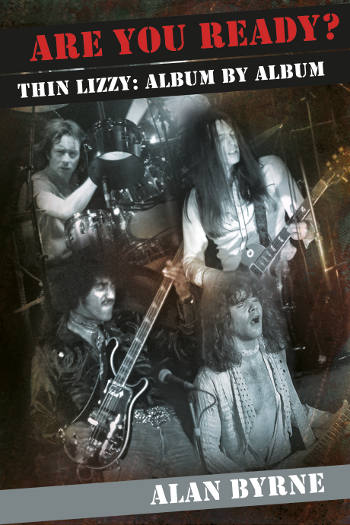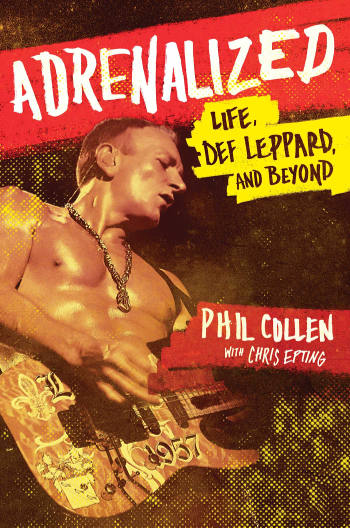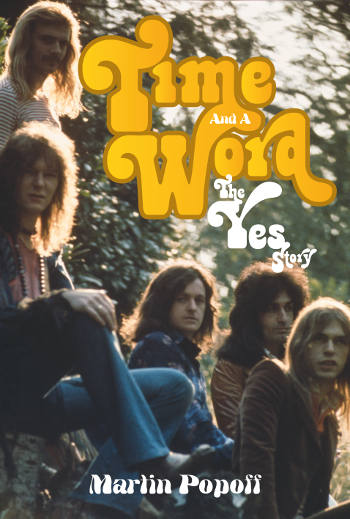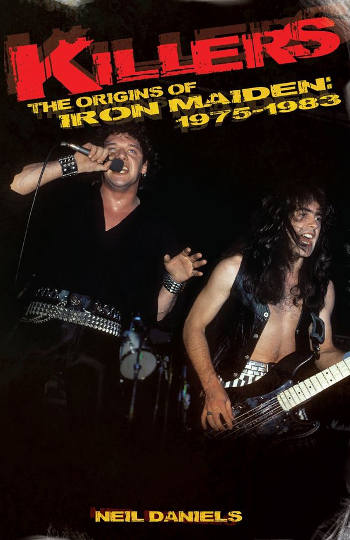
by Alexandra Mrozowska
– Sr. Columnist —
 Once a counterculture and an expression of defiance against the social norms, now Rock music is re-appropriated even by the apparently fossilized academic environment. However, if there had been a university which offers a specific multidisciplinary course about the Irish band Thin Lizzy – and its place in the history of Rock – it would have been designed by Alan Byrne. From his authorial radio documentaries to books on the subject, this Cork-based writer is an expert if it comes to telling enjoyable yet painstakingly detailed tales on Phil Lynott and the gang. If you need any further proof, only recently another Byrne-penned book on the Irish ensemble, entitled Are You Ready? Thin Lizzy: Album by Album saw the light of day via Soundcheck Books.
Once a counterculture and an expression of defiance against the social norms, now Rock music is re-appropriated even by the apparently fossilized academic environment. However, if there had been a university which offers a specific multidisciplinary course about the Irish band Thin Lizzy – and its place in the history of Rock – it would have been designed by Alan Byrne. From his authorial radio documentaries to books on the subject, this Cork-based writer is an expert if it comes to telling enjoyable yet painstakingly detailed tales on Phil Lynott and the gang. If you need any further proof, only recently another Byrne-penned book on the Irish ensemble, entitled Are You Ready? Thin Lizzy: Album by Album saw the light of day via Soundcheck Books.
The book is divided into the sixteen chapters put in a chronological order. With the exception of the first and the last one which cover the band’s beginnings and the post-split vicissitudes of Lizzy members respectively, each is constructed around the history of particular album. Apart from the preface – revealing the impact Thin Lizzy’s music exerted over the author’s private life – Byrne remains distanced throughout the entire book and his commentary, except from the reviewer’s subjectivism, remains impersonal. The album-by-album chronicle formula of the book has the author focusing on music with simultaneous careful selection of by-plots. Lizzy is thus portrayed mostly through their output, the tale being told from two intertwined perspectives – this of a listener/reviewer as well as of people who knew the band members personally. First and foremost, Thin Lizzy the reader is going to get acquainted with is the band and an ensemble of artists rather than the “real” people behind the music.
This is why most of the threads in the book revolve around the musicianship, artistic highs and lows and creative convolutions of the Lizzy history. Many songs are followed throughout the entire process of their inception and development, from rough demo versions to their final shape. Byrne also gives the reader an insight into the recording process of each album, carefully describing the situation within the band that took place before its start. This shows what could have had an indirect impact over the final results of the musicians’ work in the recording studio. One’s also given a detailed account onto the post-studio history of the particular piece of recording material. We talk its longevity in the band’s live set-list here as well as the course of events of the specific concert tour that came after the album recording. Overall, the author follows closely the group’s musical development as well as Lynott’s parallel development as a lyricist, a stage persona and a band leader – all these roles which determined his position in Lizzy and his place in the history of Rock music. Also line-up changes are detailed. However, not with the intention of revealing particular reasons behind them – but rather the influence they had on the further history of this Irish gang and their subsequent recordings. Issues of personal conflicts which arise at certain points in this story or the band members’ personal issues aren’t omitted, but again shown from the music-centered perspective of a receiver of their work.
That is not to say Are You Ready? Thin Lizzy: Album by Album itself is limited only to the chronicle of the studio and stage events. It’s also not a memoir too, and completely deprived of cheap sensationalism typical to some Rock biographies. It’s still music and the subsequent releases that determine the dynamism of the story and that, through all the motions, put emphasis on the real legacy Lizzy left behind. It wasn’t, for certain, the account of their drug abuse as well as their “tough guys” image that remains such a heritage.
However, the nostalgia-laden studio and stage vignettes, thickly embroidered with quotes from people who worked with Lizzy on various albums and stage sets, have also a bigger picture to them. As it frequently happens in the case of music biographies, Thin Lizzy could have been almost any other band of the same era. Well, minus their Irish cultural heritage and historical burden perhaps. However, the group’s modest beginnings are just one of many rags-to-riches stories that form the first chapter of almost any Rock biography. Frequent release of LPs and the extensive touring picture the way the music industry operated back in the ‘70s and the early ‘80s. Seemingly not so important details, as the emphasized importance of radio airplay and its support for the novices, show how much this industry’s changed to date. Also detailed passages related not to Lizzy directly (but to such things as history of the particular studios or the reality of the recording process instead) or the comments of ‘70s era producers and engineers broaden the reader’s perspective significantly. Moreover, the process of developing the band’s live album Live And Dangerous is a point of departure for further discussion of enhancing and improving live recordings in the studio. Byrne operates the same way in the final chapter by using the thread of unreleased Lizzy/Lynott songs (possible to be released sometime in the future) to pose more general questions. That is – should the unpublished recordings of a particular artist be unearthed post-mortem… or perhaps not at all…?
But apart from that, Are You Ready? Thin Lizzy: Album by Album is the book of two things – thoroughness and authenticity. The coverage of the particular recording process or chronicle of a concert tour is as accurate as it could only be, with such details as the names of the less important studio workers brought in. The aforesaid quotes from people who worked with the band on various releases – their former managers, music producers, sound engineers etc. and former Lizzy members – reveal many behind-the-scene stories and offer varied, multi-layered perspective and broad commentary. Quoted from mostly contemporary interviews, these passages have a modern-day perspective to them as well, although the same things reflected upon thirty years back could have been viewed very differently by the same interviewees. However, the account of those who witnessed the Irish group’s inception, their rise to stardom and slow demise adds much to the book’s authenticity. Also Byrne remains balanced and genuine in his own commentary as a reviewer – albeit a fan, he allows himself to criticize the band’s less impressive works or misdeeds.
By issuing this book, Alan Byrne added a third volume to his Lizzy trilogy (Thin Lizzy: Soldiers Of Fortune and Philip Lynott, Renegade of Thin Lizzy were published prior by SAF/Firefly Books and Mentor Books respectively). The final installment of this series of sorts is a grand finale to it. A splendid read not only for the fans of Phil Lynott and his gang and a very thorough piece of work done. Highly recommended.
ISBN: 9780992948085
Publisher: Soundcheck Books
Website: http://www.soundcheckbooks.co.uk



